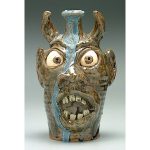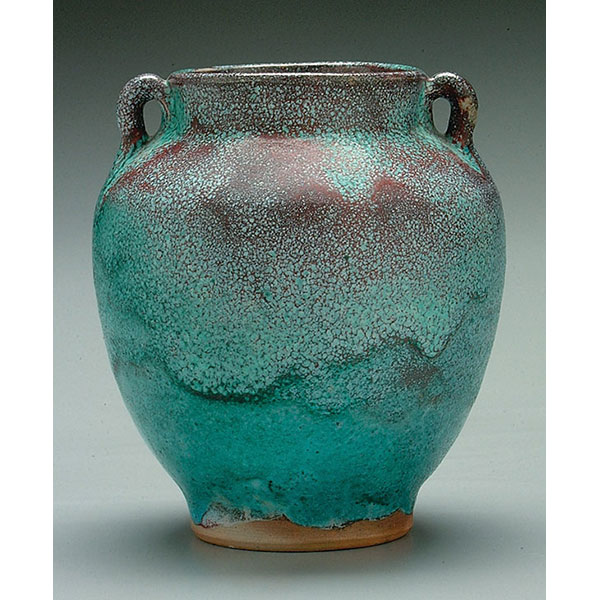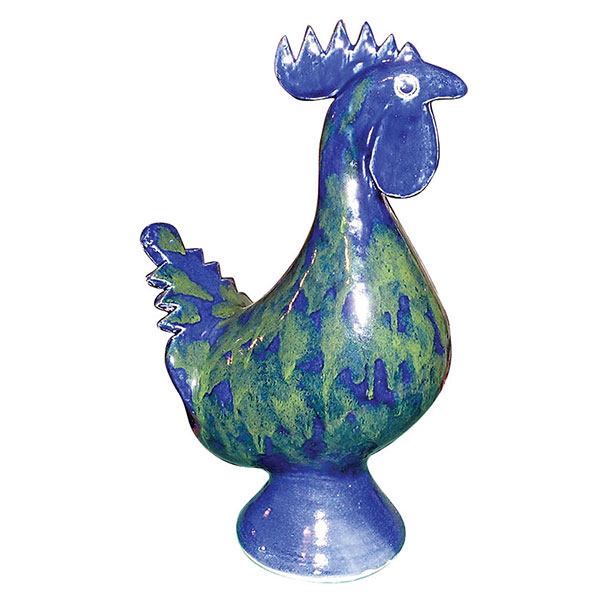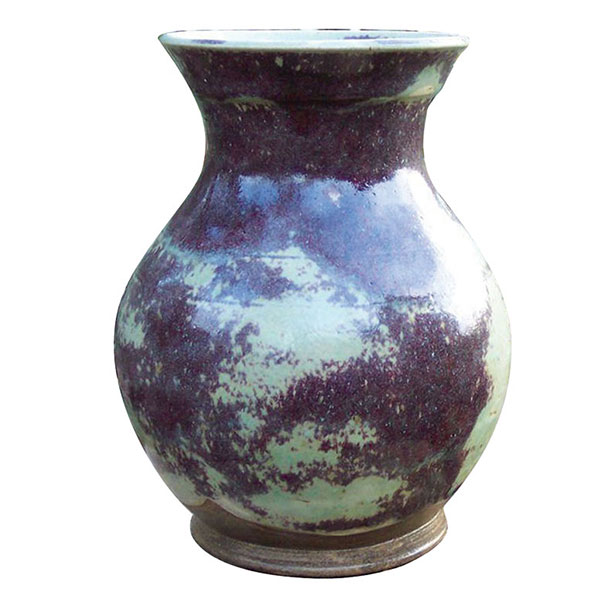Identification Guides
Southern Potteries
 Face jugs like this stoneware devil have been a Southern pottery form for centuries. This 10-1/4-inch jug is marked 'WA Flowers NC Mtns 1995 AD.' Photo: Brunk
Face jugs like this stoneware devil have been a Southern pottery form for centuries. This 10-1/4-inch jug is marked 'WA Flowers NC Mtns 1995 AD.' Photo: Brunk
Southern folk pottery was not appreciated by many collectors until the 1980s. It was considered too crude and primitive. Most Southern potters lived in rural areas and made utilitarian vessels—pickle jars, syrup jugs, butter churns, milk pitchers, and baking dishes. Styles and forms rarely changed, and most pieces were undecorated and unsigned. Some Southern potteries were operated by the same family for more than a century. Techniques were passed down with few changes from one generation to the next. Potters used local clays and local ingredients for salt and alkaline glazes. They turned forms on a treadle wheel and fired pieces in a groundhog kiln. Decorations on pots were simple; most were incised, but some were painted or sculpted. Webster Cornelison founded the Cornelison Pottery to make salt-glazed stoneware in Bybee, Kentucky. According to legend, the pottery was established in 1809, although the earliest records date from 1845. The name was officially changed to Bybee Pottery in 1954. It is considered the oldest existing pottery west of the Allegheny mountains. In the 1920s and 1930s, it made art ware. Bybee now makes utilitarian and decorative wares using local clay, grinding it in an antique mill, and throwing and shaping it by hand on a potter's wheel. Today the pottery is run by members of the fifth and sixth generations of the Cornelison family. Toward the end of the twentieth century, Southern potters began to use modern forms, glazes, techniques, and marketing methods. In response to increased demand by tourists and collectors, potters began to make more decorative pieces— vases and flowerpots— and fanciful forms, including face jugs, miniatures, and figures of people and animals. Face jugs are dark jugs with distorted faces, crooked teeth, and big eyes. Older face jugs, pieces with alkaline glaze, and jars with cobalt decorations—animals, plants, or people—sell for the highest prices.


